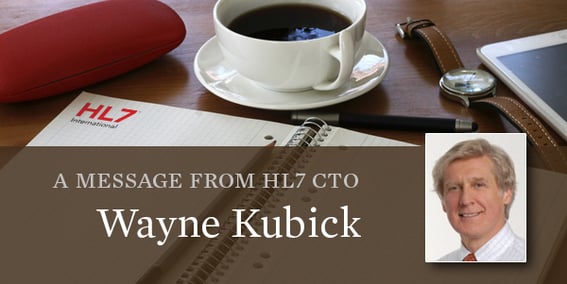
Keeping Us Together While Apart
During this time of global crisis, it’s worth remembering the critical importance of what we at HL7 are doing to improve global health by making health information more available and useful. While so many are struggling with social distancing, we already have a culture that long ago learned to work together remotely on our common goals. But now with fewer opportunities to meet together in person, we need to move ahead to finish much of the work we’ve been doing over the past few years – so we’re better prepared to work together even more effectively, while knowing we must be further apart geographically.
Improving Collaboration
As the necessity of getting the most out of our virtual meetings increases, we have reviewed our web conferencing solutions, and have decided to move to Zoom as a new conferencing platform. As one of the most advanced conferencing platforms, Zoom offers improved quality and reliability, as well as a wealth of features we can use to improve our meeting management practices. Initially, we will convert work groups (WGs) who meet frequently to Zoom to replace Free Conference Call (FCC) and GoToMeeting and will offer it as an additional option to other work groups and projects. We hope to get all HL7 work groups, committees and projects to the new platform by end of summer.
On a separate note, we also plan to provide guidance to meeting facilitators on best practices for using Zoom to conduct more effective web meetings. For example, by using the “Raise Hand” feature we hope to make it easier for attendees to get a turn to join conversations.
Our recent consolidation of our Zulip chat.hl7.org instance into chat.fhir.org was another step toward simplifying the HL7 tooling environment. We’ll continue to look for opportunities to converge on a smaller set of high performing collaboration tools.
While we adapt these tools, we’ll keep working to make it easier to find essential information while culling out what’s inaccurate, obsolete or redundant to create a simpler, more effective environment. We’re preparing updated guidelines for how to manage information in Confluence and the website. At this point, we expect all WGs are using Confluence for meeting agendas and minutes – which can be accessed through a link on the WG website page. All WGs should be using Confluence for new content instead of the old wiki.
Ultimately, through a combination of using common platforms and practices for all HL7 meetings, we hope to make it easier to work together more effectively.
The Next Generation of Harmonization Is Here
The Unified Terminology Governance (UTG) project team has dived headfirst into implementation, so the May 2020 ballot cycle will be the first in a long while without a harmonization meeting. The final mile of the rollout process – including substantial testing, software improvements and detailed planning for a projected May go-live date – was well in progress at the time of this writing.
Of course, like all new technologies, we can expect some growing pains as we proceed, and will expect to provide incremental improvements as we move forward. However, providing UTG as another way to use collaboration tooling on an ongoing basis will help us interact better on a global scale, while also bringing a single method to support current and future HL7 terminology needs
JIRA for All
If 2019 was the year of Confluence, 2020 is our time for JIRA. Having successfully migrated FHIR tracking to JIRA, we are proceeding to transition other products and WGs to the JIRA platform for issue tracking. Similarly, we’ll be moving the STU Comment website page to JIRA. We’re also working to complete activities necessary to allow JIRA to be our primary platform for recording and resolving ballot comments, along with other activities to re-engineer our entire ballot management systems infrastructure.
JIRA workflow is critical to improving our processes for getting work done at HL7. The new PSS online process is now being actively piloted, and TSC plans to begin to make it available to all WGs during 2020. JIRA workflow will also begin to be applied for other forms and processes. As we gain more familiarity with the platform, we’ll likely discover many other ways in which it can improve the way we conduct our standards work at HL7.
As usual, you can stay informed of new functions and helpful tips at confluence.hl7.org.
Publishing
The FHIR IG publisher continues to be refined and enhanced to support reliable, efficient publishing of standards on a wider scale. It is being used to publish UTG terminology and is also being used by other organizations – notably IHE – who can now define their own templates. We’re proceeding with a project to produce Consolidated Clinical Document Architecture (C-CDA) templates using the FHIR StructureDefinition resource. And a Version 2 (V2) group is exploring using the IG Publisher to produce an enhanced web version of V2. We expect the IG Publisher to be the baseline tool for publishing many more HL7 standards in the near future.
Balloting
While we continue to work to move all WGs and products to JIRA, we’re also continuing development of a new ballot comment system and process using the JIRA platform. We’re expecting to do an initial pilot ballot for the September ballot cycle, and I’ll be discussing more detailed plans for changing our ballot-related systems in a future update.
Crossing Over
During this critical and pivotal year, our ambition is to complete the transition to many of these new tools and processes to realize the vision of a better HL7. We recognize that this will be an initial burden for many of you, but we are also confident that once you cross over, you’ll be very glad we made the journey. Finally, all of this is only possible thanks to you, our dedicated HL7 community.


